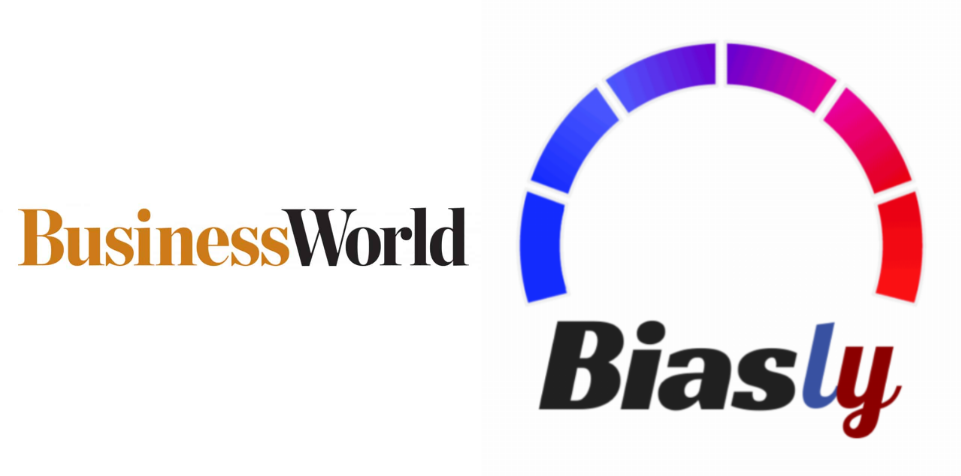In today’s era of rapid information exchange, news consumption has become a pivotal part of our daily lives. Whether it’s staying updated on political developments, world events, or economic shifts, Americans are inundated with information from countless sources. However, this access to information comes with a significant caveat: media bias. The slant or perspective through which news is presented has a profound impact on how audiences perceive current events. Biasly, a platform dedicated to offering comprehensive analysis of media perspectives and reliability, is tackling this issue head-on by helping readers identify and understand media biases.
The Growing Challenge of Media Bias
Media bias refers to the perceived or actual partiality of journalists and news outlets in presenting information. This bias may manifest in how stories are selected, framed, or reported. In the United States, media outlets are often accused of leaning towards specific political ideologies—either liberal, conservative, or somewhere in between. For example, Fox News is frequently associated with right-leaning perspectives, while CNN and MSNBC are often viewed as left-leaning.
Such biases can deeply affect public perception. Research shows that many Americans consume news from outlets that align with their own political beliefs, creating echo chambers. This phenomenon reinforces existing viewpoints, reduces exposure to opposing perspectives, and widens the ideological divide in society. Biasly recognizes the importance of addressing this challenge and aims to equip readers with the tools to critically evaluate media content.
What is Biasly?
Biasly is an innovative platform designed to help users navigate the complex world of media bias and political news trends. By offering a detailed analysis of news articles, headlines, and sources, Biasly provides valuable insights into the reliability and objectivity of various news outlets. This platform’s mission is straightforward: to enable readers to identify bias, make informed decisions, and ultimately develop a more comprehensive understanding of the stories shaping the world today.
One of the standout features of Biasly is its Political Party Stances tool, available at https://www.biasly.com/political-party-stances/. This feature provides a clear breakdown of where different political parties stand on key issues. Ranging from healthcare and climate change to taxes and immigration. By offering objective summaries of party positions. Biasly ensures that readers have access to unbiased information that goes beyond media framing.
How Biasly Identifies Bias and Enhances Media Literacy
Biasly’s methodology is rooted in technology, transparency, and critical thinking. By analyzing language, tone, and factual accuracy, the platform evaluates articles for potential biases and categorizes them accordingly. For instance it might highlight whether a news story is favoring a liberal or conservative narrative or whether it employs emotionally charged language to sway readers.
The platform uses advanced algorithms alongside human expertise to ensure accuracy in its assessments. In addition to identifying bias Biasly rates the reliability of news sources based on their history of accurate reporting and editorial standards. This dual approach—analyzing both bias and reliability—gives users a more complete picture of the media landscape.
For an audience that is increasingly skeptical of the news they consume, tools like Biasly are essential. By fostering media literacy, Biasly encourages readers to think critically about the information they encounter. Rather than passively accepting headlines at face value, users are empowered to question narratives, verify facts, and explore multiple perspectives.
Media Bias and Political News Trends
The United States has seen a significant shift in the media landscape over the past few decades. The rise of digital platforms has led to a proliferation of news outlets, each competing for clicks, views, and shares. This competition has contributed to sensationalism and a tendency toward polarized reporting.
Political news, in particular, is a major battleground for media bias. During election cycles, coverage often becomes hyper-partisan. With outlets framing candidates and issues in ways that appeal to their target audiences. This selective reporting can shape public opinion and even influence voter behavior. For instance, a news outlet with a conservative bias may emphasize economic growth under Republican leadership. While a liberal outlet might focus on social justice issues championed by Democratic candidates.
Biasly steps in to provide balance. By analyzing political news trends and identifying patterns in reporting, the platform helps readers see the bigger picture. Instead of being swayed by partisan narratives, users can access objective insights that enable them to form their own opinions.
Shaping Public Perception: The Role of Media
Media plays a powerful role in shaping public perception. The way stories are framed, the choice of language, and even the images accompanying articles can influence how readers interpret events. For example, describing a protest as “peaceful” versus “violent” creates vastly different impressions, even if the facts remain the same.
Biasly’s tools encourage readers to look beyond surface-level reporting. By identifying subtle cues that indicate bias, users can better understand the intentions behind news coverage. This deeper understanding is critical in a society where misinformation and disinformation are rampant.
Why Biasly Matters
In an age where trust in media is declining, Biasly offers a much-needed solution. By promoting transparency, accountability, and critical thinking, the platform empowers Americans to navigate the news with confidence. Whether you’re a casual reader trying to stay informed or a political enthusiast seeking deeper insights. Biasly provides the resources you need to separate fact from spin.
Ultimately, Biasly’s mission goes beyond analyzing media bias—it’s about fostering a more informed and engaged society. By helping readers understand the nuances of media coverage. The platform contributes to a healthier democracy where individuals are equipped to make decisions based on facts rather than persuasion.
For anyone looking to better understand the interplay between media, politics, and public perception, Biasly is an invaluable resource. Visit their website and explore tools like the Political Party Stances feature to begin your journey toward media literacy and informed decision-making.


